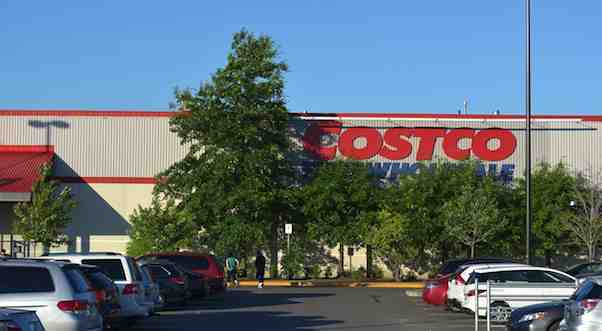
Costco Wholesale Corporation’s generic strategy (based on Porter’s model) dictates the company’s approach to maintaining its competitive advantage. As one of the biggest retailers in the world, the company follows its generic competitive strategy to directly compete against other large retailers in the same target markets. On the other hand, Costco’s intensive growth strategies determine the actions suited to growing the business. The company takes its intensive growth opportunities to continue expanding worldwide. Despite the tough competition noted in the Five Forces analysis of Costco, the business remains strong and competitive, thereby showing the effective implementation of its generic competitive strategy and intensive growth strategies.
The combination of Costco’s generic competitive strategy and intensive growth strategies enables the business to grow despite competition with other retailers and e-commerce companies, like Walmart and Sam’s Club, Aldi, Target, Kroger, Best Buy, Home Depot, Lowe’s, eBay, Rakuten, Amazon and Whole Foods. Competitive pressure on Costco also involves discount retailers, like Dollar Tree and Dollar General, as well as convenience store chains, such as 7-Eleven.
Costco’s Generic Competitive Strategy (Porter’s Model)
Costco’s generic competitive strategy is cost leadership. This generic strategy entails low costs typically reflected through low selling prices. Customers expect significant savings when they buy at the company’s stores. However, other big-box retailers also use the cost leadership generic competitive strategy. To set itself apart from the competition, Costco partly employs broad differentiation as a secondary generic strategy. This secondary generic strategy makes the warehouse club business stand out based on certain characteristics. For example, the business differentiates based on value or quality, such as through Kirkland Signature, which is the company’s house brand. Thus, broad differentiation leads to a competitive advantage and allows Costco to compete based on quality, in addition to the low prices, which are the primary selling point based on the generic strategy of cost leadership.
One of Costco Wholesale’s financial strategic objectives is cost minimization through economies of scale, which relate to the cost leadership generic strategy for competitive advantage. Cost minimization facilitates low prices along with savings for shoppers. This condition satisfies pricing goals based on Costco’s mission statement and vision statement. Also, cost leadership requires high efficiency to achieve low costs in the retail business. This efficiency factor defines Costco’s operations management and productivity goals and approaches.
Costco’s Intensive Growth Strategies (Ansoff Matrix)
Market Penetration. Costco’s main intensive growth strategy is market penetration. Based on Ansoff’s Matrix, this intensive strategy supports growth through more sales in retail markets where the firm already operates. Costco’s marketing mix (4Ps) uses various marketing strategies and tactics to attract more buyers to the company’s warehouses or stores. A strategic objective based on this intensive growth strategy is to increase customer retention, such as through discounts based on membership. A higher rate of customer retention can increase the company’s customer base and sales revenues. Costco’s generic competitive strategy of cost leadership supports this intensive growth strategy by using low prices to attract more customers.
Market Development. Costco’s secondary intensive growth strategy is market development. This intensive strategy enables the company to grow through sales in new markets or market segments. For example, the company opens new stores or warehouses in new locations, such as overseas markets, to gain more customers. A strategic objective based on this intensive growth strategy is to expand the supply chain to support new store locations in new markets. Costco’s generic strategy of cost leadership leads to low prices and the promise of savings that attract new customers to newly opened locations. The strengths noted in the SWOT analysis of Costco are used for increasing success rates in implementing the intensive growth strategy of market development.
Product Development. Costco’s tertiary intensive growth strategy is product development. This intensive strategy supports the retail company’s growth through the introduction and sale of new products. For example, Costco adds time-limited or seasonal products, as well as new products under the Kirkland Signature brand. A strategic objective for this intensive growth strategy is to establish alliances with manufacturers for co-branding of their products with the Kirkland Signature brand. These alliances can create supply stability and ensure low costs for Kirkland-branded merchandise. Costco’s generic competitive strategy of cost leadership maintains low costs that support the production goals of the intensive growth strategy of product development. The PESTLE/PESTEL analysis of Costco notes social and economic trends that this growth strategy needs to match.
References
- Costco Wholesale Corporation – Company Profile.
- Costco Wholesale Corporation – Form 10-K.
- Gupta, A., Pachar, N., Jain, A., Govindan, K., & Jha, P. C. (2023). Resource reallocation strategies for sustainable efficiency improvement of retail chains. Journal of Retailing and Consumer Services, 73, 103309.
- Obu, O. C., & Ukpere, W. I. (2023). The effects of transactional barriers on the effectiveness of a firm’s competitive strategy. Journal of Economic Development, Environment & People, 12(3).
- Ricardianto, P., Lembang, A., Tatiana, Y., Ruminda, M., Kholdun, A., Kusuma, I., … & Endri, E. (2023). Enterprise risk management and business strategy on firm performance: The role of mediating competitive advantage. Uncertain Supply Chain Management, 11(1), 249-260.
- U.S. Department of Commerce – International Trade Administration – Retail Trade Industry.